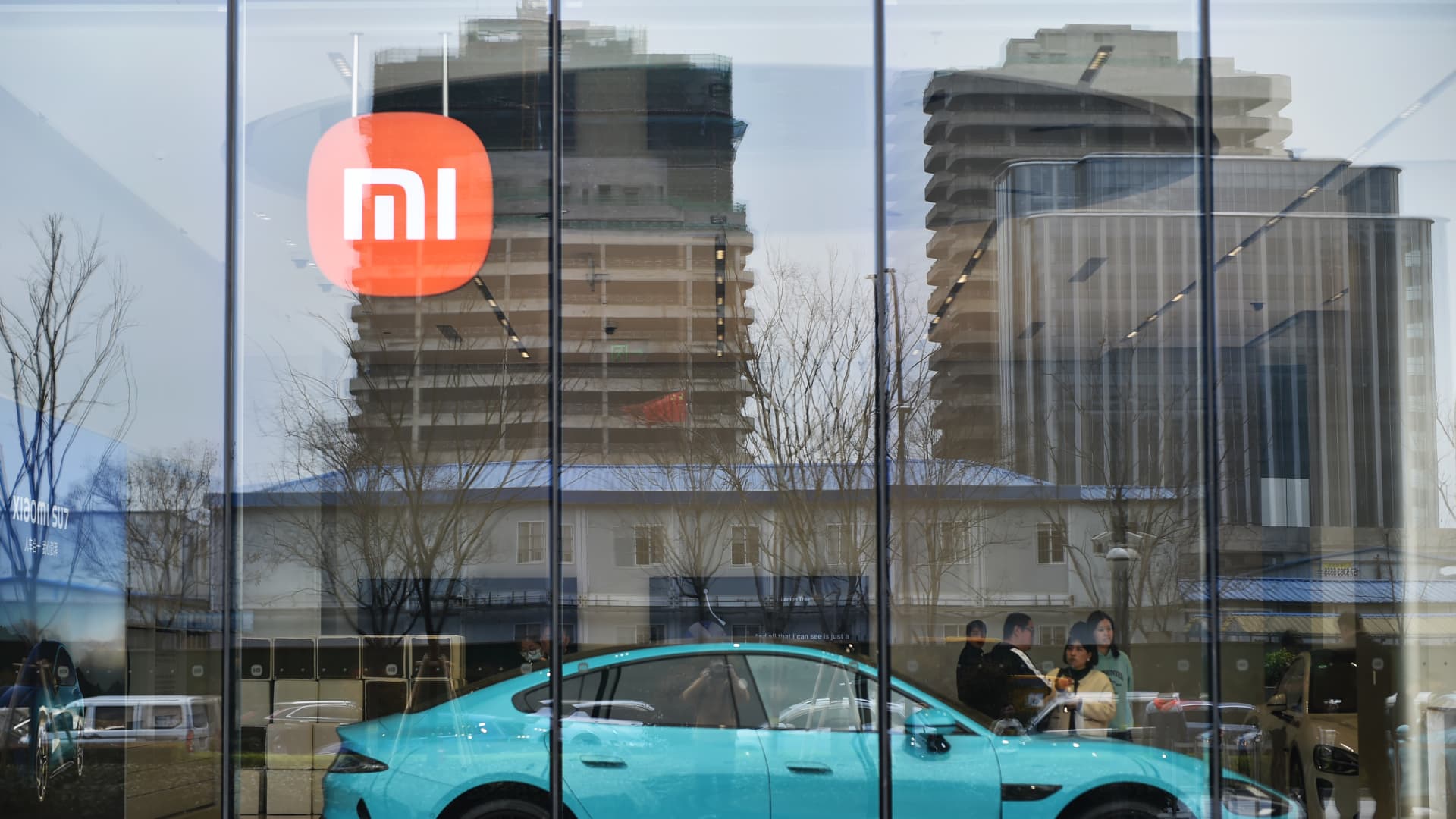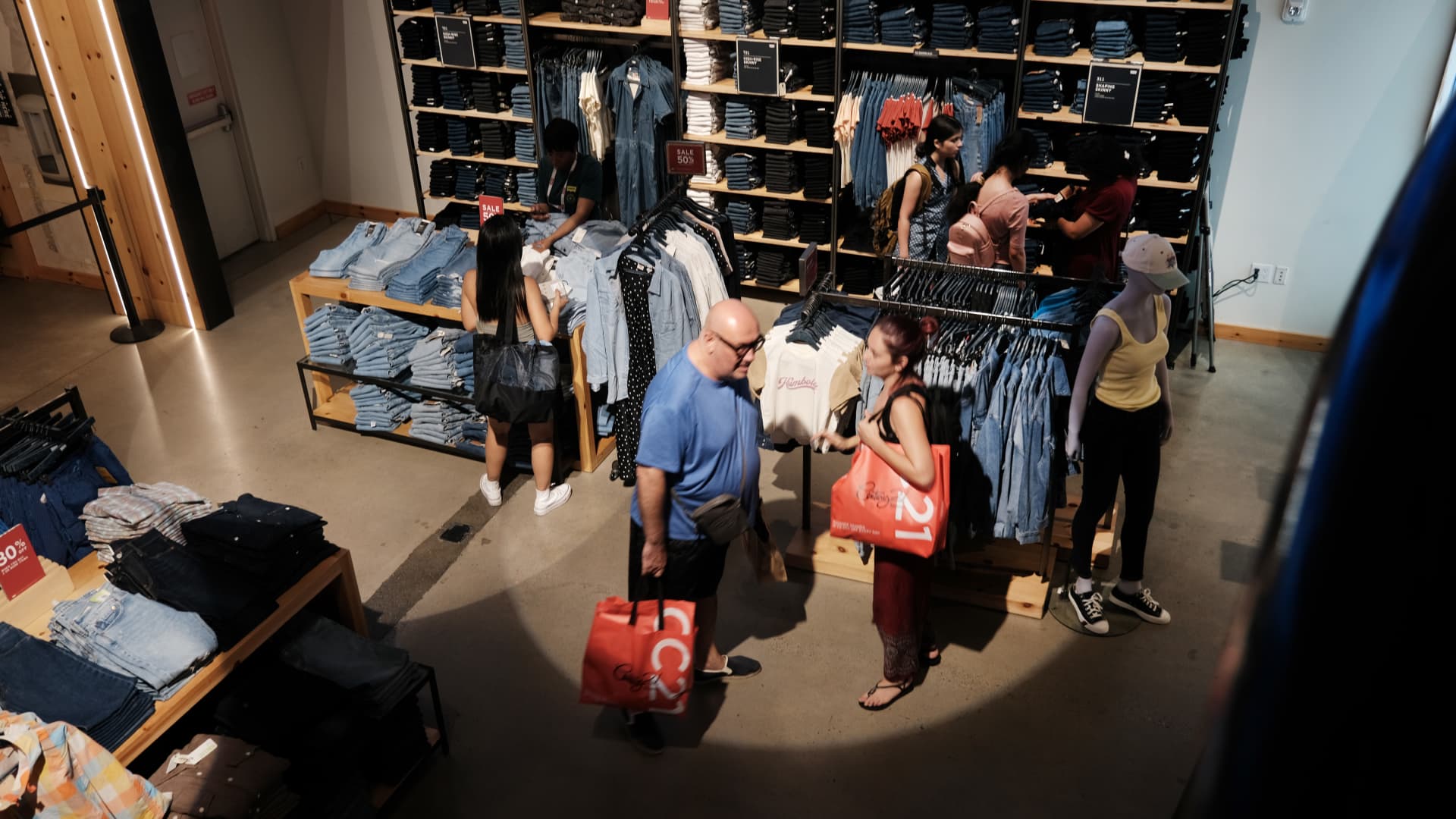Tariffs designed to protect America’s solar industry from foreign competition were reinstated Thursday, ending a two-year pause approved by President Biden as part of his effort to boost U.S. solar energy adoption
The tariffs, which will apply to certain solar products made by Chinese companies in Southeast Asia, came as global concern grows over a surge in cheap Chinese solar products that undercut U.S. and European manufacturers.
The Biden administration has sought to build America’s solar industry by providing tax credits, and companies announced more than 30 new investments in U.S. manufacturing last year. But U.S. solar companies say they are still fighting for survival as rivals in China and Southeast Asia flood the global market with solar panels sold at prices far below what American companies must charge to stay in business.
That has forced President Biden to make an uncomfortable choice: continue to welcome cheap imports that help the United States transition away from fossil fuels, or block them to protect new U.S. solar factories that benefit from taxpayer money.
The tariffs that take effect Thursday highlight this dilemma. The levies, which are imposed on certain solar products entering the United States from Cambodia, Thailand, Malaysia and Vietnam, were approved two years ago after U.S. officials ruled that some Chinese firms were trying to defy existing American tariffs on China to circumvent this by reselling solar modules through other countries. The exact tariff rate depends on the company, but can also be over 250 percent.
The Chinese companies had set up factories in Southeast Asia, but Commerce Department officials said some were not producing on a significant scale there. Rather, they used locations in those countries to make minor modifications to solar products made in China and then ship them duty-free to the United States, according to the ruling.
These products should have been subject to additional tariffs, but the Biden administration made the unusual decision in June 2022 to temporarily suspend them for two years to ensure the United States continued to have access to sufficient solar panels. Congress passed a resolution reinstating the tariffs last year, but Mr. Biden vetoed them.
The government described the decision to suspend tariffs as a compromise. Groups such as the American Clean Power Association, which represents solar and energy storage companies, had argued that imposing the tariffs would harm U.S. efforts to combat climate change. But the decision angered many of the domestic solar manufacturers that the Biden administration also wanted to help.
In the two years since the Biden administration made the decision to suspend tariffs, solar prices have collapsed and solar panel imports have surged.
Danny O’Brien, president of corporate affairs at Qcells, a company that makes solar panels in Georgia, said there are nearly two years’ worth of subsidized imported solar panels in U.S. warehouses. “We welcome President Biden’s significant steps to level the playing field,” he said. “But if we want to build a lasting domestic supply chain that meets our climate goals, continues to create jobs and contributes to our energy security, the Biden administration’s industrial policy must evolve and be aggressive.”
Over the last year, Biden administration officials have been increasingly vocal about the risk posed by imports and the need to protect emerging factories, some in key electoral states.
In March, Treasury Secretary Janet L. Yellen gave a speech in Norcross, Georgia, at Suniva, a struggling solar manufacturer that received subsidies under the 2022 Inflation Reduction Act. Ms. Yellen noted that the company, which filed for bankruptcy in 2017, is now resuming solar cell production this year.
However, she also noted that such investments could be threatened by China’s excess industrial capacity for green energy technology. “China’s overcapacity is distorting global prices and production patterns, harming American companies and workers as well as companies and workers around the world,” she said.
The finance minister raised the Suniva case again in April at a news conference in Beijing, where she met with senior Chinese officials. She recalled that Suniva’s financial problems began more than a decade ago when China began ramping up production of cheap solar panels.
While the company has now received more support from the U.S. government, she said, “the continued investment in capacity in these areas in China, which is outpacing growing global demand, could actually become a threat to a company like this.”
It is not yet clear how many, if any, of the Chinese companies that distribute their products through Southeast Asia will still face tariffs. In the past two years, many have set up factories in Southeast Asia that could allow them to make the case that they are producing significantly there and not just avoiding tariffs by moving goods through those countries, industry executives said.
Meanwhile, U.S. solar manufacturers have begun pushing for more comprehensive protections. In April, a group of American solar manufacturers filed another lawsuit with the Commerce Department and the U.S. International Trade Commission, asking them to investigate unfair subsidies and pricing practices by factories in Cambodia, Malaysia, Thailand and Vietnam.
The commission will make an initial decision on Friday on whether U.S. companies were harmed by these practices. If that happens, additional taxes could be imposed on imports from Southeast Asia, where a majority of U.S. solar panels are manufactured.
“We do not expect that the removal of the tariff exemption will have a major impact as Chinese-owned and -based companies have already adjusted their production to avoid the circumvention event,” said Timothy Brightbill, an attorney at Wiley Rein der represented the US-based solar manufacturers in the recent case. “Our case is extremely important because it picks up where the evasion case left off.”
The back-and-forth over tariffs highlights a dilemma facing the United States as it tries to cut some ties with China. Mining compounds has been particularly difficult in green industries where China dominates global production, such as solar panels, critical minerals and batteries for electric vehicles.
China accounts for more than 80 percent of the global solar supply at every stage of the production chain, from the raw material polysilicon to the finished modules.
The significant support from the Chinese government as well as the enormous economies of scale that the Chinese industry has achieved have enabled Chinese manufacturers to offer their products at extremely low prices. According to Wood Mackenzie, solar panels in China cost just 9 to 11 cents per watt, compared to 27 to 33 cents per watt in the United States. Many U.S. factories currently sell modules either at cost or at negative margins to compete with imports, Wood Mackenzie said.
These low prices led to an increase in imports. According to S&P Global, the United States imported a record 54 gigawatts of solar panels in 2023, up 82 percent from 2022.
Some argue that the United States should simply take advantage of these low prices to expand its solar power supply. But the oversupply also threatens Biden’s plans to revive green energy production in the United States. Some new manufacturers have been discouraged from opening operations in the United States. In February, a Massachusetts company called CubicPV Inc. canceled plans to build a solar wafer factory, citing collapsing prices.
Under the rules, companies must technically install any solar panels they brought into the United States duty-free before December or face retroactive tariffs.
“The challenge now is for companies to use up their inventories over the next six months,” said Mona Dajani, global co-chair of energy infrastructure and hydrogen at Baker Botts. “Many in the industry will certainly be keeping an eye on how this impacts installation and pricing numbers in the coming weeks.”
Source link
2024-06-06 16:07:41
www.nytimes.com
















